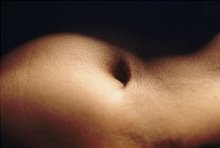The centre of the kampung consists of about 10 wooden shop lots, which were built in the early 70s on top of what used to be a factory of sorts. I can’t really remember what factory it used to be though I remember it had crumbled for some reason or other. Before these wooden shops were built, the shops were littered in a very disorderly manner around the centre of the kampung. The socio-economic layout of the kampung is simple to observe and understand. It is simply a cut out from our colonial socio-economic landscape template. Nothing less and nothing more.
The centre of the kampung is occupied by several Chinese families. They operated the kampung’s padi processing plant, sell household items and owned the groceries shops. They were the minority. But they control most of the productive, in terms of money churning, economics activities in the kampung. The Malay majority lived just after the centre and they were divided into 2 categories, namely, the landowners and the padi planters. Most of the Malays were poor. Before the mid 70s, they could only plant padi once a year due to lack of proper irrigation system. They would plant padi sometime in the month of December or January, harvested it in the month of July and then the land would be unused for the rest of the year due to lack of water. In the meantime the padi planters would be jobless. They supplemented their income by going to the sea or fishing in the river. But most of them fell for the usual business ploy of the Chinese. I will visit that later.
At the end of the row of shop lots was a shop operated by Cha Kau aka Ah Kau. He sells fish, vegetables and the likes. My family, and many others, maintained an account with him. We would buy goods and he would enter the prices we owed in the 555 note book. At the end of every month, we would pay him, interest free! Or so he says. He had 2 younger brothers. The elder of the 2 was called Brahim by the kampung folks. The younger one was known as Hussein. Cha Kau used to deliver fish and vegetables to my house on his kapchai. And while he was calculating our dues I used to hijack and sped on it to the horror of my mom and himself!
Then we have Jin Beng, the owner of some kind of a supermarket in that kampung. He has a sister. I remember her name, Ah Gek. Slightly older than me and a pretty one at that. She used to assist her brother to man the shop sometimes and I would go and pretended to buy something just so that I could disturb her! I remember when I was in a boarding school, I would visit her every time I came back to the kampung. She would say, “aiya, you manyak pandai ar, nanti you pegi duduk kl macam you punya abang la…” (hey, you are so clever and one day you would go and stay in Kuala Lumpur like your brothers). She must have 8 kids by now!
Then we have Eng Hui, who operated the padi processing plant in the kampung. Almost single handedly, he monopolised the buying of padi from the Malays. He had everything, from lorries to tractors for ploughing the padi lands, to a padi processing plant. His was a one-stop centre for the Malays. He would give them credits during the period when padi could not be planted. He would then buy their padi and set off the price against the credit accordingly. He would then process the padi and sell the resulting rice back to the kampung folks at a profit. Every which way, he made money! He’s got sons (and some nice looking daughters too! – don’t ask me how I know about his daughters) who lived in Penang. He was wealthy and he could be counted on by the Malays who were in needs.
Then we have the usual operator of an illegal empat nombor ekor guy who operated at the centre of the row of shop lots. Behind that ENE room, he had a small room where he served alcohol to who ever. And there was also a Chinese guy who operated a small place which served opium to the masses! Back in the old days, circa the 1950s, I am told, these kind of places were licensed to serve opium and it kind of continued till the 1960s. Oh ya…coincidentally, his place was just a stone’s throw away from the village mosque.
…to be continued when able!






No comments:
Post a Comment